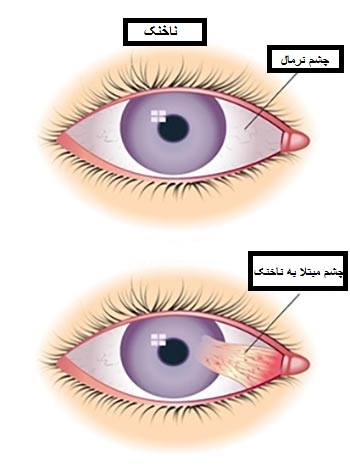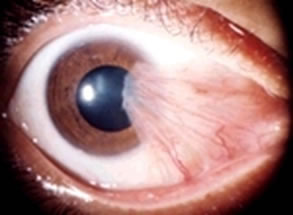Pterygium
The growth of connective tissue along with vascular tissue is called pterygium which invades the cornea (the front transparent layer of the eye). It is actually an abnormal process during which the conjunctiva (a membrane that covers the sclera) grows on the cornea. The pterygium can be small or big enough to interfere with vision.
After cataract, pterygium is one of the most common eye diseases.
The main cause of the pterygium is still unclear, though it appears to be one of the side effects of ultraviolet light of sun, i.e., exposure to sunlight or dusty environments is among the underlying causes of the disease and thus people who activate outdoor are more exposed to pterygium.

In the early stages of the onset of the disease, which is a small lesion in the eye that does not cover the cornea, the symptoms are milder, but gradually and with the progress of the disease, the person will experience problems such as burning, itching and redness. However, in more advanced cases, when the lesion has spread to the eye, the patient’s vision is blurred.
In addition to vision decline, pterygium causes other ocular complications, such as astigmatism. Fortunately, blindness and ocular complications of the pterygium can be cured and treated, and the lesion in the eye can be removed through surgery, if the pterygium growth in the eye also affects the cornea or causes discomfort for the patient and prevents using contact lenses.
The healthy tissue, stem cells, or connective tissue of the conjunctiva will replace the damaged eye tissue in this surgery, and, if the pterygium has affected the cornea, the patient will also need to undergo corneal transplantation surgery.

One of the most significant problems for people who undergo pterygium surgery is the possibility of the return of this lesion at the eye surface, of course the prescription of appropriate drugs to prevent pterygium growth can play a significant role in the recurrence of the disease.
The patient will not need any special treatment, if the pterygium is small and does not affect the appearance of the patient.
